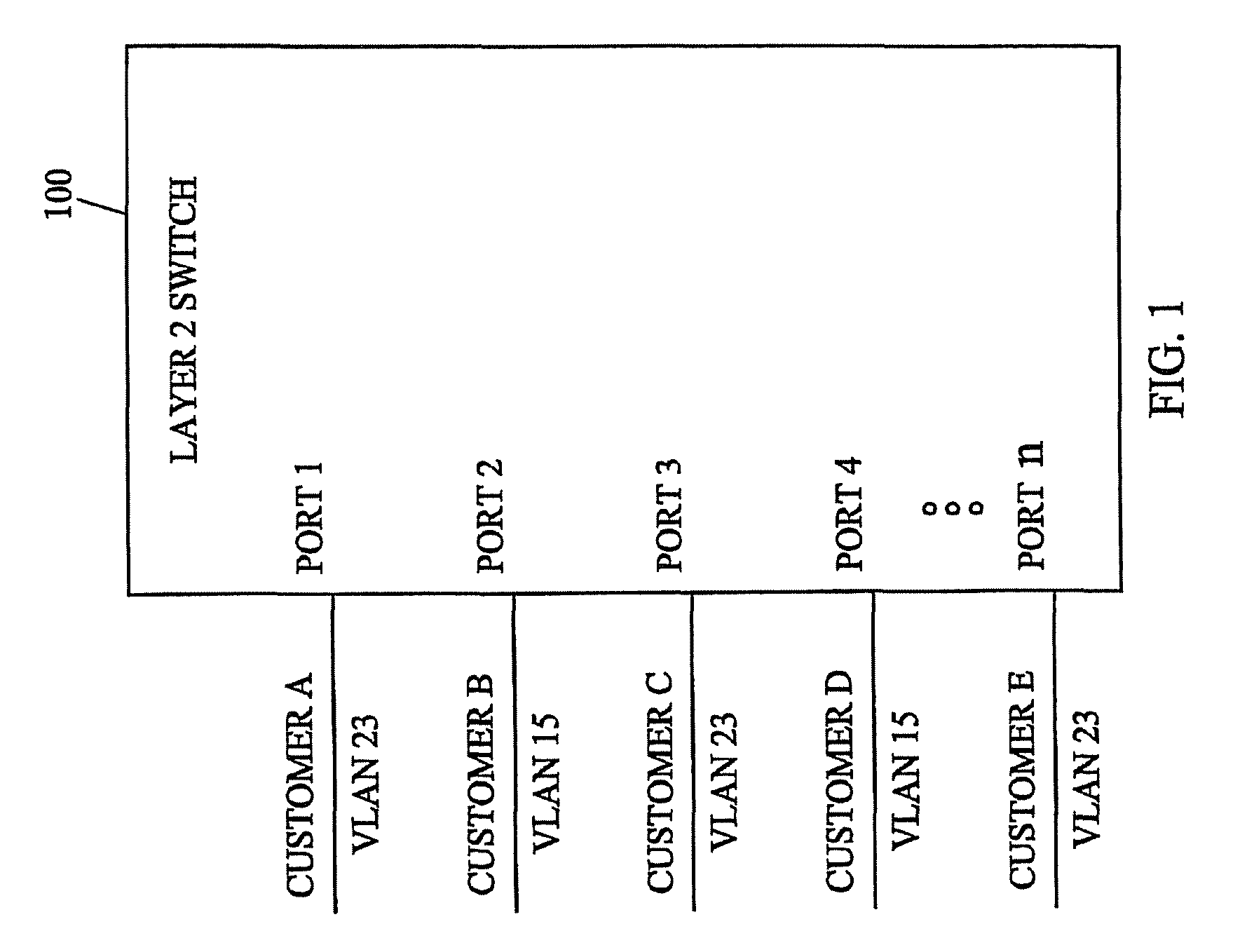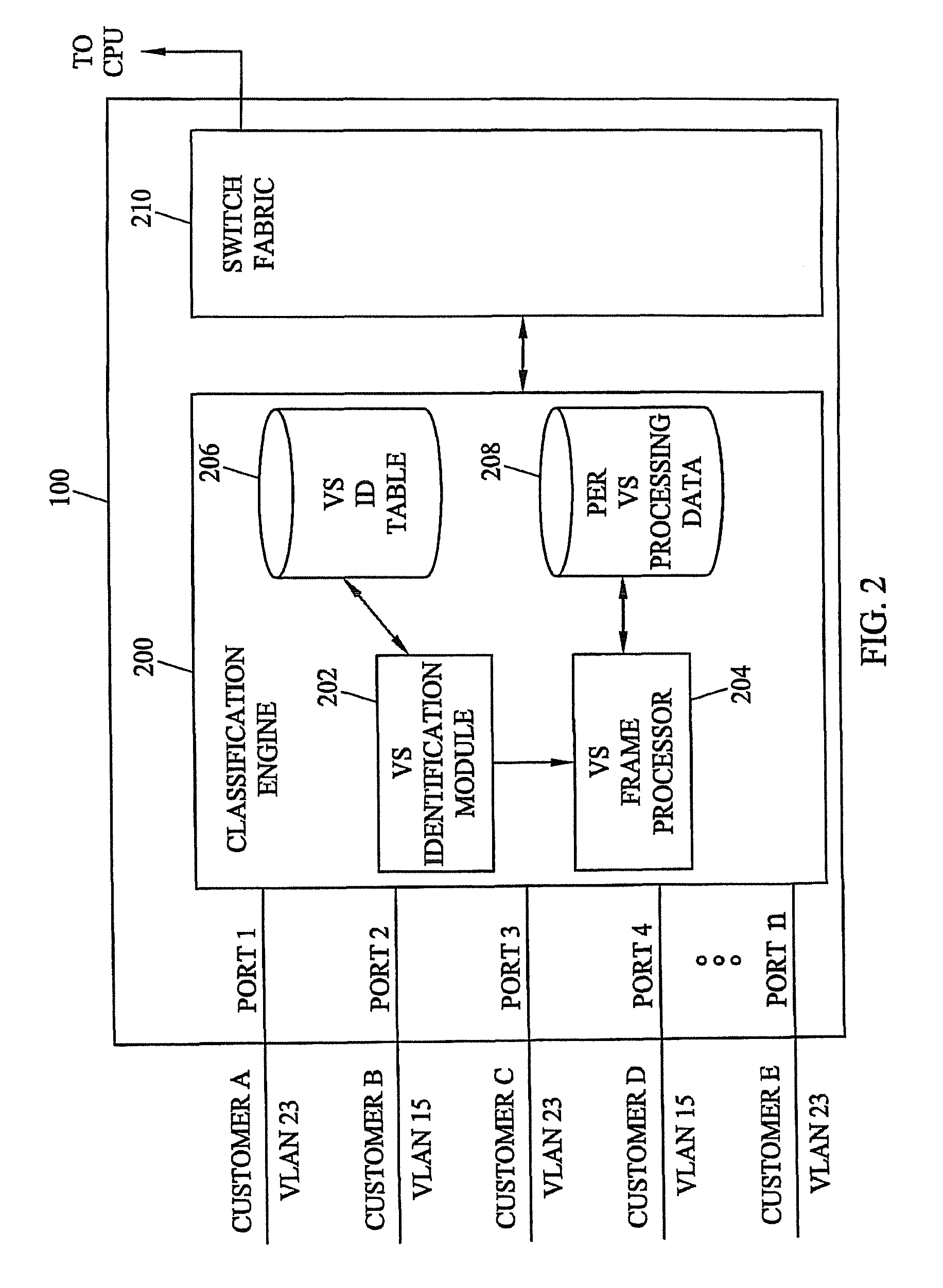Methods and systems for selectively processing virtual local area network (VLAN) traffic from different networks while allowing flexible VLAN identifier assignment
a technology of vlan and identifier, applied in the direction of data switching by path configuration, digital transmission, data switching network, etc., can solve the problems of increasing the cost of forwarding device, more memory is required,
- Summary
- Abstract
- Description
- Claims
- Application Information
AI Technical Summary
Benefits of technology
Problems solved by technology
Method used
Image
Examples
Embodiment Construction
[0027]FIG. 1 is a block diagram of a layer 2 switch in which the methods and systems of the present invention may be implemented. In FIG. 1, layer 2 switch 100 includes a plurality of ports numbered 1-n. As used herein, the term “port” refers to the physical point of entry for a network cable in a layer 2 switch. According to the present invention, each port in layer 2 switch 100 is assigned a port identifier. The port identifier may be added to a layer 2 frame upon entry into layer 2 switch 100. As will be described in detail below, the port identifier may be used in combination with a VLAN identifier to allow customers to flexibly assign VLAN identifiers without regard to VLAN identifiers assigned to other customers of the service provider that operates the layer 2 switch.
[0028]In the example illustrated in FIG. 1, Customer A uses VLAN identifier 23 on port 1. Customer B uses VLAN identifier 15 on port 2. Thus, traffic from Customer A on port will not be flooded to Customer B on p...
PUM
 Login to View More
Login to View More Abstract
Description
Claims
Application Information
 Login to View More
Login to View More - R&D
- Intellectual Property
- Life Sciences
- Materials
- Tech Scout
- Unparalleled Data Quality
- Higher Quality Content
- 60% Fewer Hallucinations
Browse by: Latest US Patents, China's latest patents, Technical Efficacy Thesaurus, Application Domain, Technology Topic, Popular Technical Reports.
© 2025 PatSnap. All rights reserved.Legal|Privacy policy|Modern Slavery Act Transparency Statement|Sitemap|About US| Contact US: help@patsnap.com



